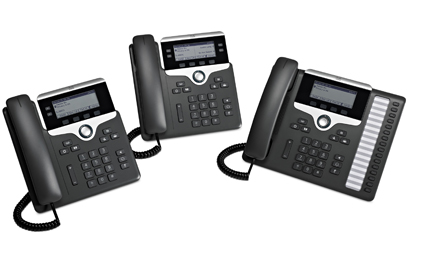Cisco Unveils Mobile Enhancements to Collaboration Suite
As telework and mobile workforces continue to mature and increase across the country, technology companies are racing to supply these modern workers with the tools they need to get the job done.
Cisco, which has long been at the forefront of collaboration technology, announced several noteworthy new solutions at its recent Collaboration Summit, which was held in Boca Raton, Fla., late last month.
Among them was a new communications gateway called Cisco Expressway, a complementary feature called Jabber Guest that secures third-party access to the gateway, and several new communication endpoint technologies and products. Cisco says these new solutions — which are tailor-made for mobile and distributed workforces — are simple to use, highly intuitive and can scale across organizations of all sizes.
Cisco Expressway is designed to streamline secure real-time voice, instant messaging and video communications via Jabber and Cisco TelePresence endpoints without the need for device-level registration, accounts and passwords — regardless of location. As an important piece of Cisco’s Collaboration Edge Architecture, the solution is designed to provide organizations with a communications “on ramp,” according Cisco.
Jabber Guest extends guest access through Expressway to anyone outside the organization (for example, a business partner or customer) without compromising organizational security. Third-party guests can interact with employees using high-definition voice and video from within a web browser or mobile device by simply clicking on a link provided through IM or on a business’s website.
“The rise in mobility has opened up new ways in which teams, employees and customers are choosing to connect and collaborate with one another to get things done,” says Rowan Trollope, senior vice president and general manager of Cisco’s Collaboration Technology Group. “The key to success in this new world is having open and accessible communications that cross experiences — whether it be in a physical office, face to face through a video call, in a voice call, or in a converged connection through Cisco Jabber.”
Communicate As Work Sees Fit
According to Cisco, the new communication endpoints introduced at the conference are designed with simplicity and scalability in mind.
Due in December, the Cisco TelePresence MX300 is a team- or room-based video conferencing endpoint that now sports a sleeker, more accessible and more usable design. Cisco designed the MX300 to be quickly assembled and automatically provisioned in as little as 15 minutes.

The ergonomic Cisco IP Phone 7800 Series phones are class-1 Power over Ethernet devices, which makes them frugal and intelligent in terms of power consumption. The IP phones, which power down during off-hours, can reduce costs by up to 60 percent, Cisco claims.
While mobile work is a priority, Cisco also announced a new technology called Intelligent Proximity, which allows users to easily connect mobile devices with on-premises products in the office. The first Intelligent Proximity–compatible product is the Android-based Cisco DX650 smart desk phone.
Starting this month, DX650 users will be able to wirelessly sync their desk phones with their Apple and Android smartphones to import contacts and call histories to the DX650. They’ll also be able to move an in-progress call to and from their mobile device and desk phone.
“With these latest announcements, Cisco is providing customers with the sophisticated collaboration and communication experience that corporate IT expects,” says Trollope, “while also offering the same intuitiveness and simplicity found in easy-to-use, software-based consumer communication tools."








